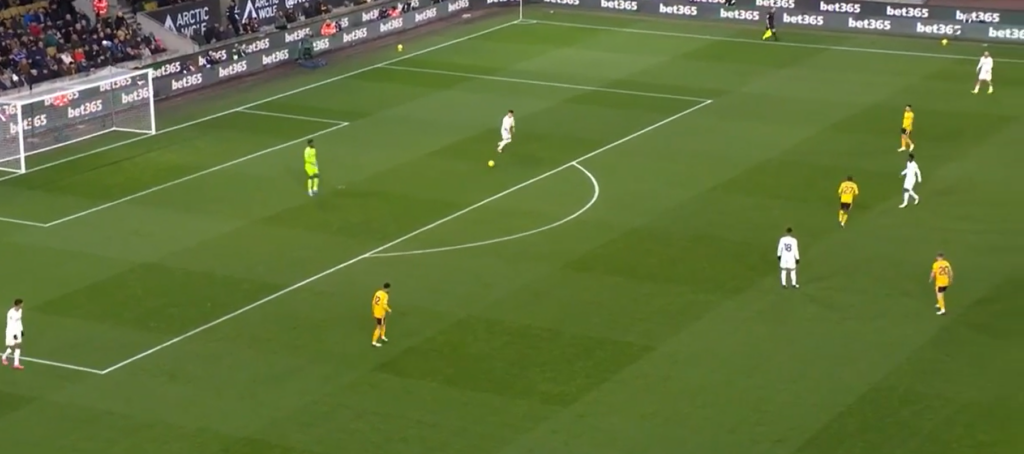
Manchester United picked up a VERY dramatic late 4-3 win away at Wolverhampton Wanderers on Thursday night, but in reality, the game should have been a lot more comfortable than it was.
Outside of Antony‘s late attempt to sabotage, Manchester United put together their best performance of the season by some distance vs Wolves, with only the following win against West Ham coming close. Granted, the bar isn’t exactly very high, but it was a genuinely good game played by Erik ten Hag‘s men, and their possession play was the highlight.
United created opportunity after opportunity at Molineux, and had they executed better in crucial moments, they could have scored at least another four. A lot of the opportunities came from long balls, something that the club have been ineffective with for a lot of this season.
Read More: Manchester United open to letting player leave who was “disrespected” last season
In this game, United were remarkably effective, though. Why? The intention was the key differential.
In many games this season, United have gone along with the aim of creating counter-pressing moments in the midfield, where players fight for second balls and look to create fast offensive transitions through winning them. This hasn’t worked very well, to put it bluntly.
Against Wolves, United patiently passed around, finding space and manipulating Wolves’ structure through smart passing, movement, and deceptive actions with the ball – such as shoulder drops to evade pressure. After these composed and patient possession sequences, they would exploit the space that had been opened up with long passes, changing the picture of the attack – and people seemed to miss this.
What exactly does this mean? Simply put, United switched the areas in which they were playing, exploiting space that they had opened up in Wolves’ structure. United were able to run at and behind Wolves’ defence many times from doing this, suiting the direct running qualities of United’s front three.
The support runs from the full-backs, Diogo Dalot and Luke Shaw, saw United frequently overload Wolves in wide areas, and both full-backs played crucial roles in the United goals in the first half. Both goals are analysed below:
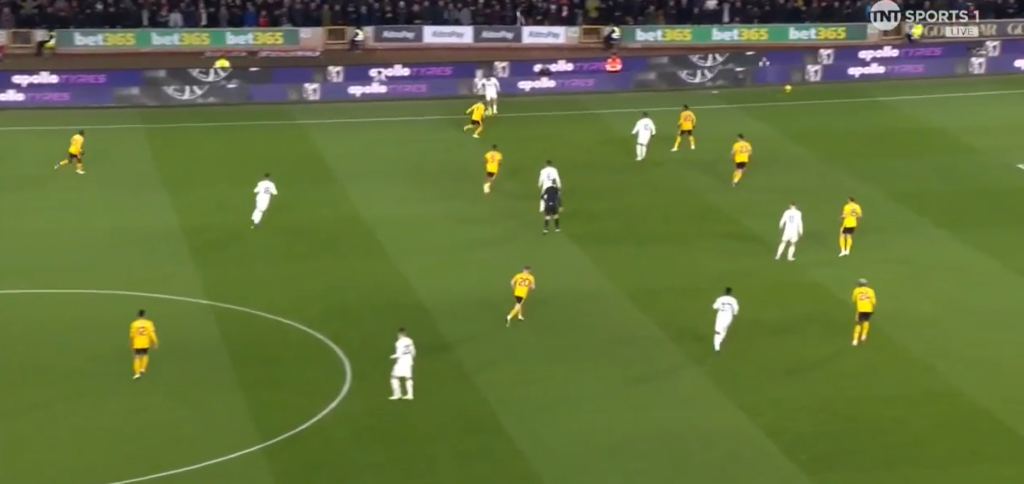
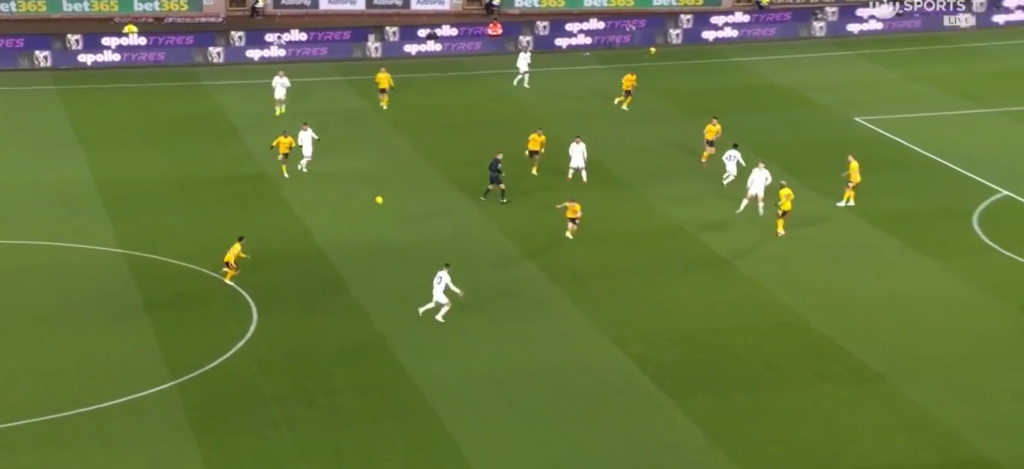
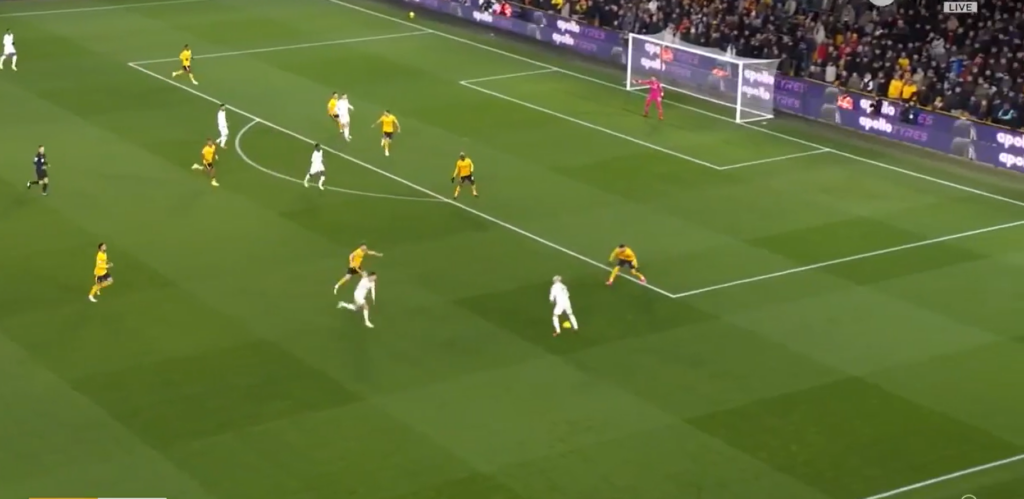
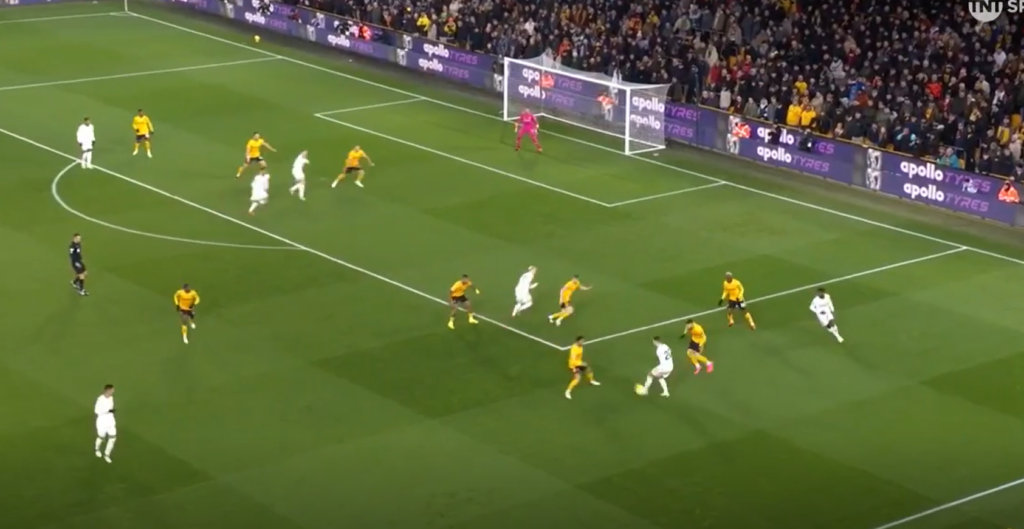
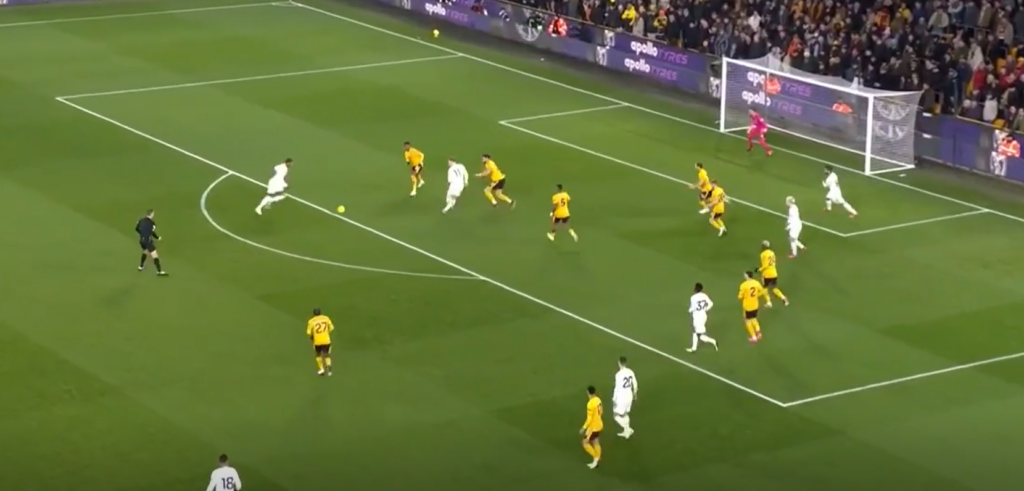
We can see how United exploited Wolves here, patiently waiting for space to be created before changing the picture and exploiting the space. Some moments of quality from Dalot and Fernandes played a key part in opening Wolves up before Rashford’s strike.
The second goal again saw United balance patience with penetration excellently, moving the ball and manipulating the space well to open up Wolves before Højlund’s hard-earned goal.
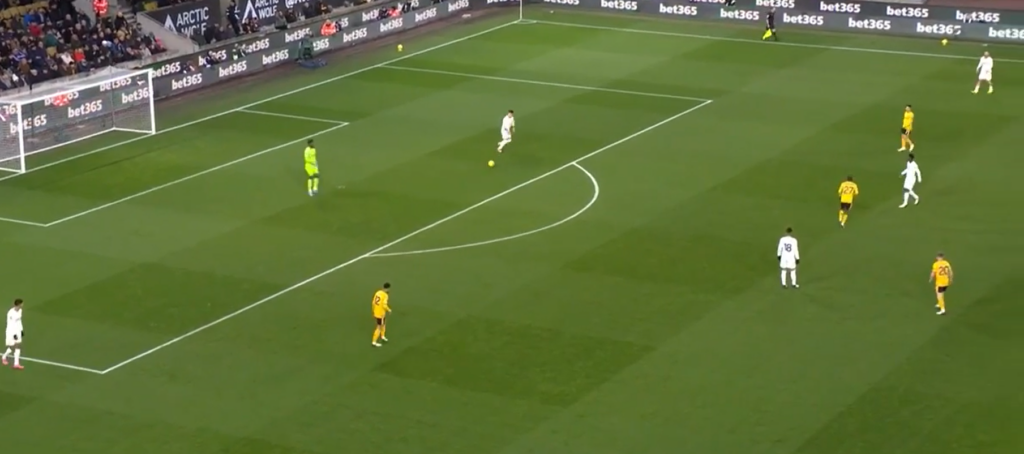
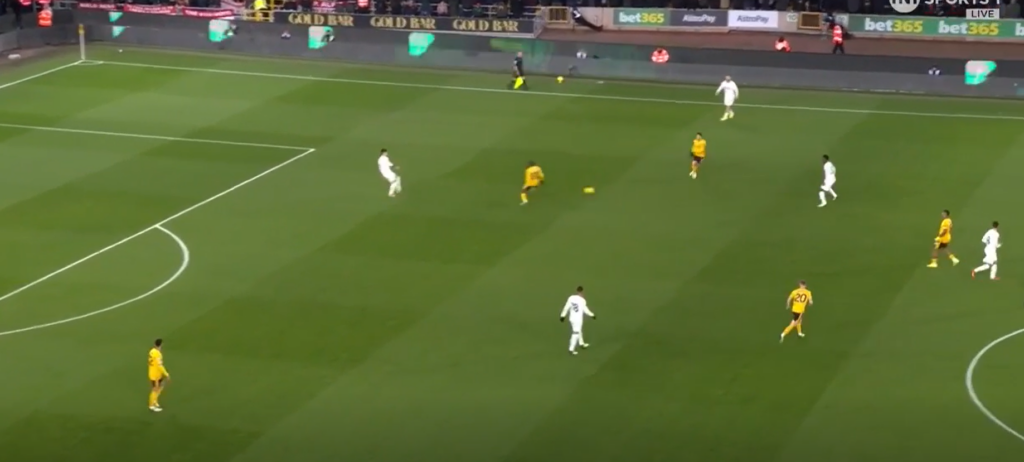
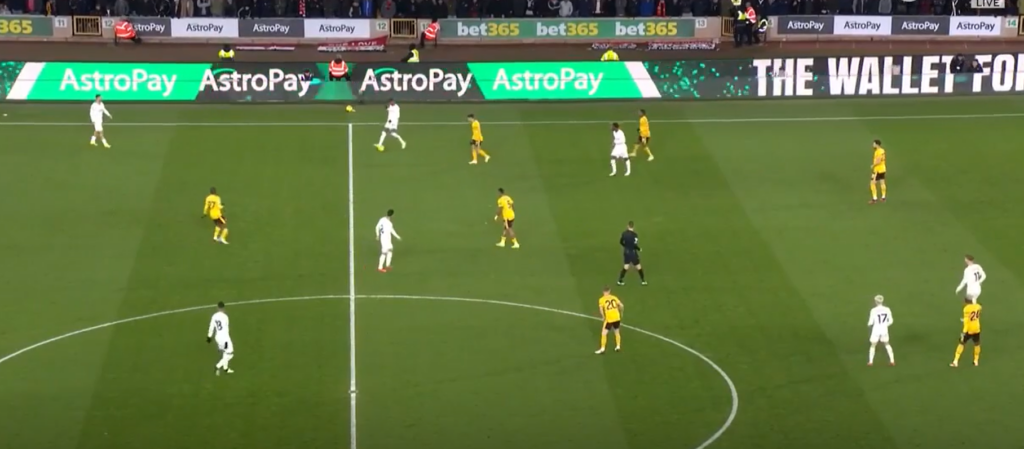
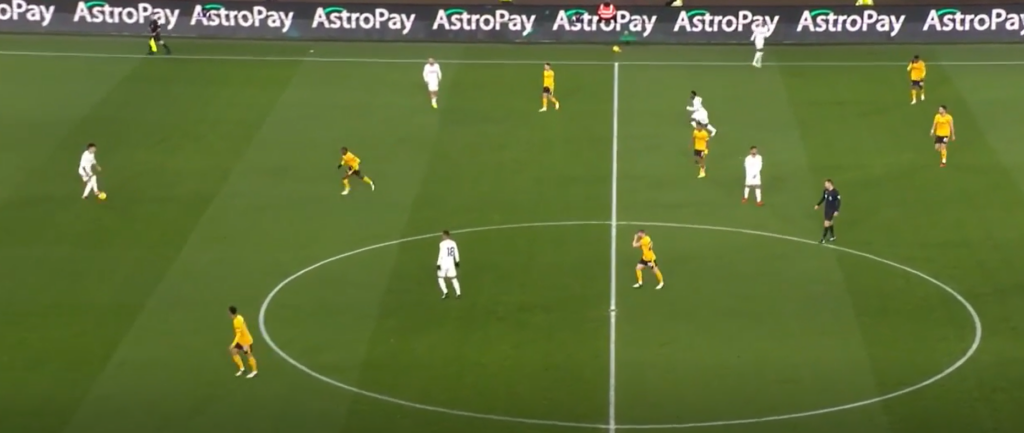
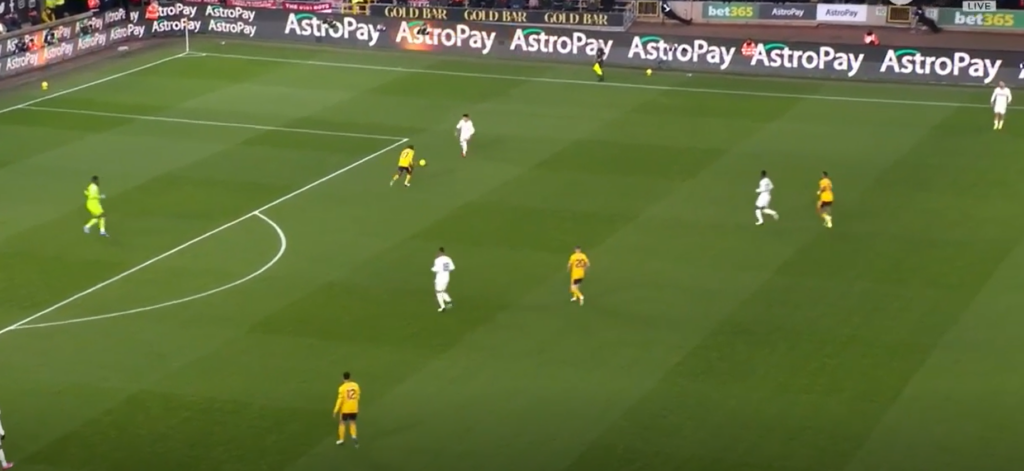
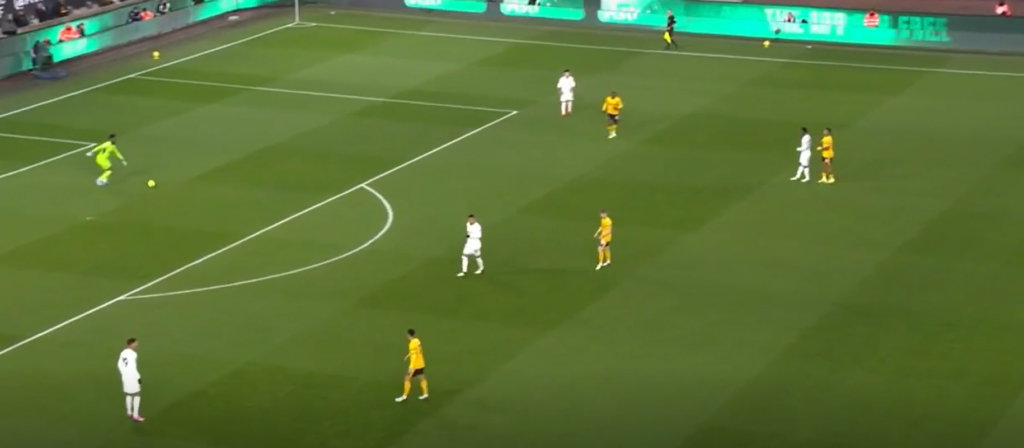
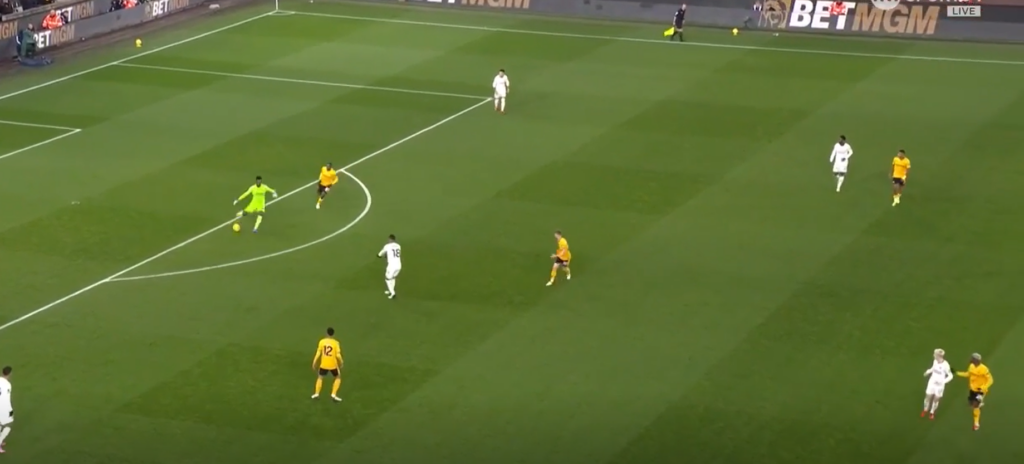
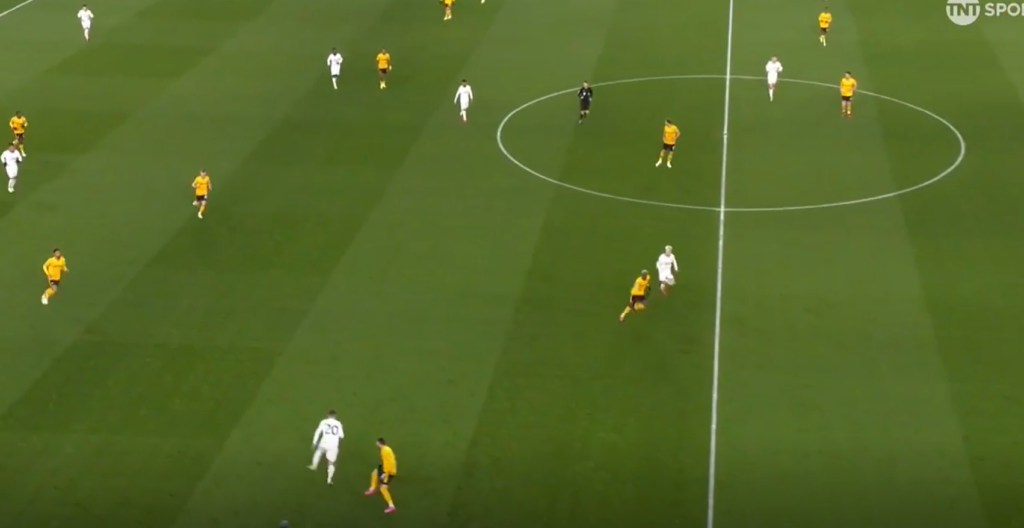
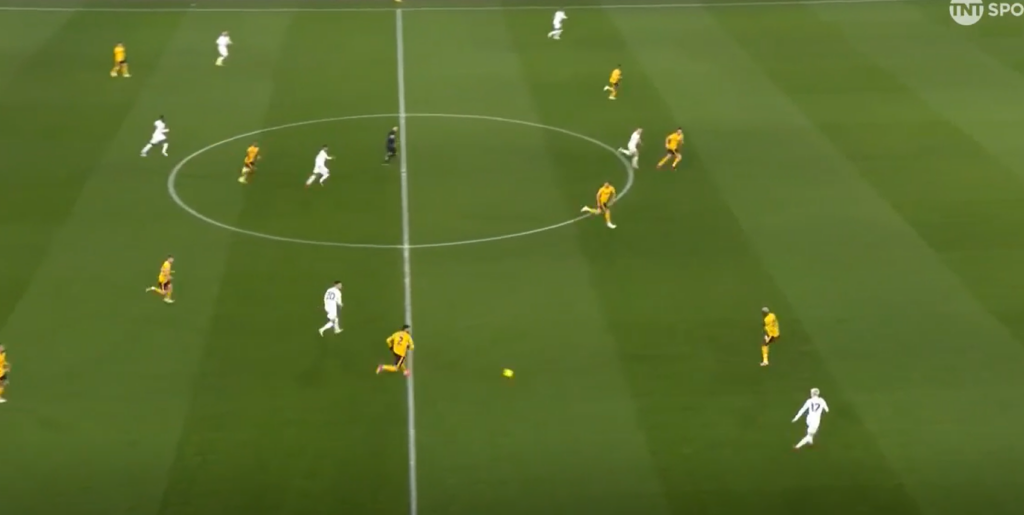
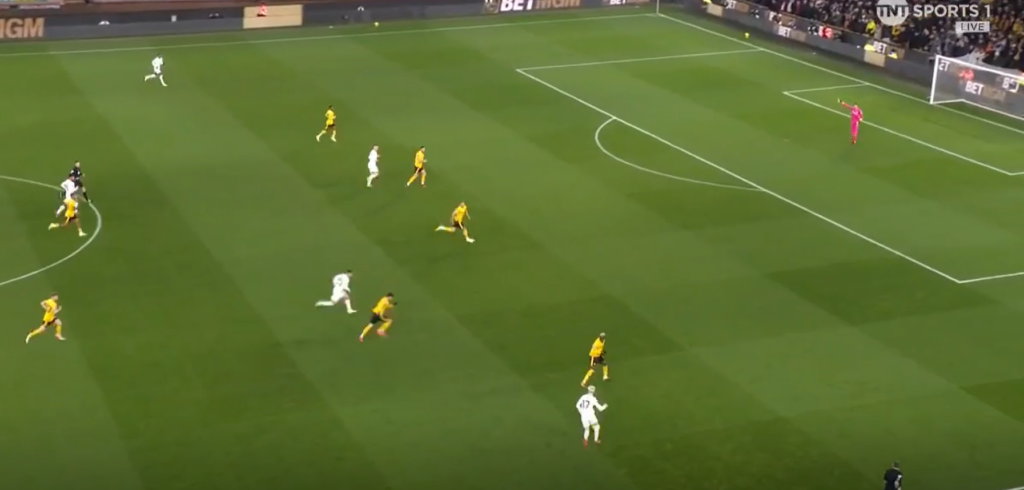
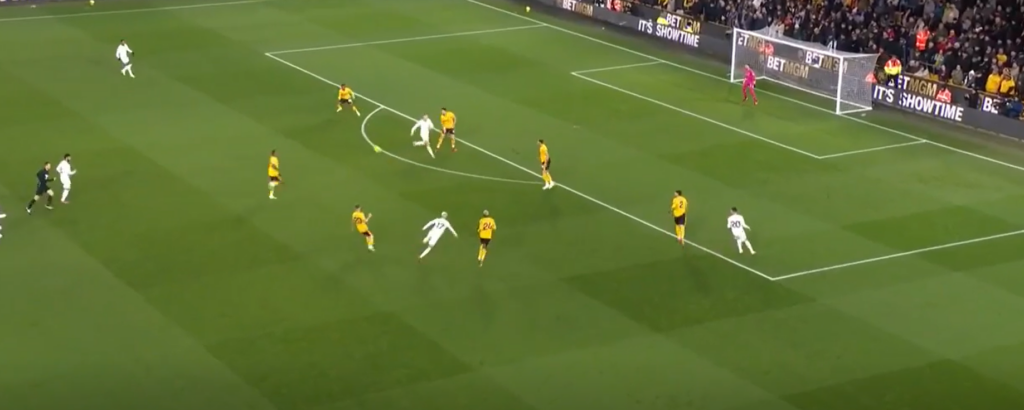
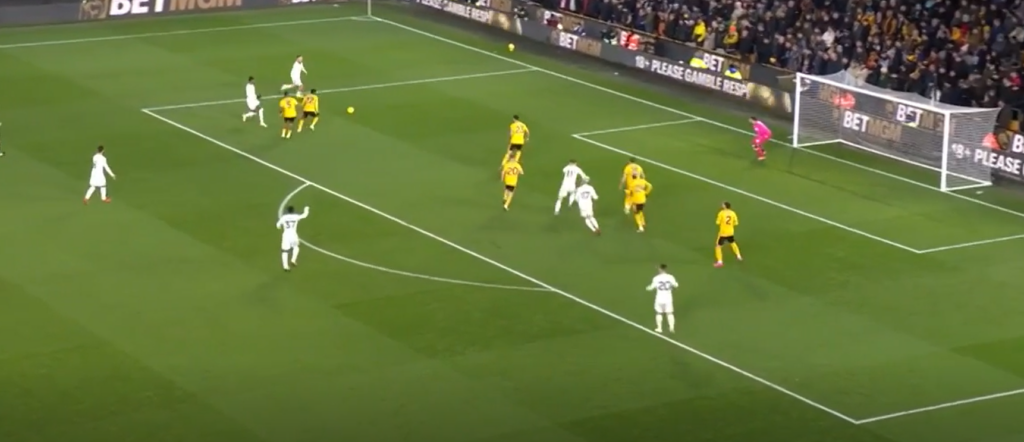
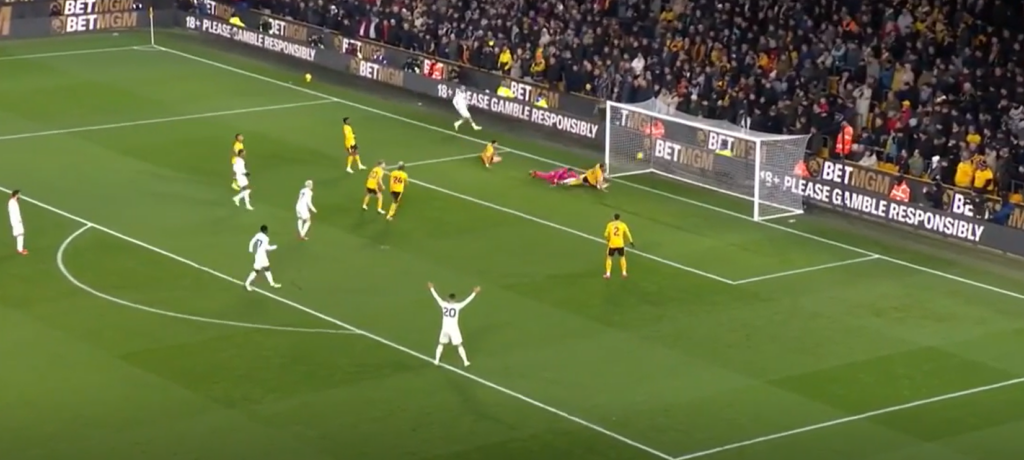
Again here, we can see how United crafted this goal from the back. The buildup was good, recognising when to accelerate and decelerate play accordingly and moving Wolves around to create space. Onana eventually changes the picture with his pass to Dalot, and the Portuguese full-back’s excellent ball manipulation under pressure sets off a transitional attack for United – bringing out Alejandro Garnacho’s direct running qualities.
The movement of the full backs is key to this, Dalot’s underlap creates space for Garnacho to run inside and Shaw’s overlap to support Marcus Rashford when isolated gets him into a good position for a cutback, from which United score. Højlund more than earned his goal.
United had many opportunities they crafted from using this tactic in possession. One of them came moments before the goal, where Alejandro Garnacho raced free in transition but didn’t get his final ball right.
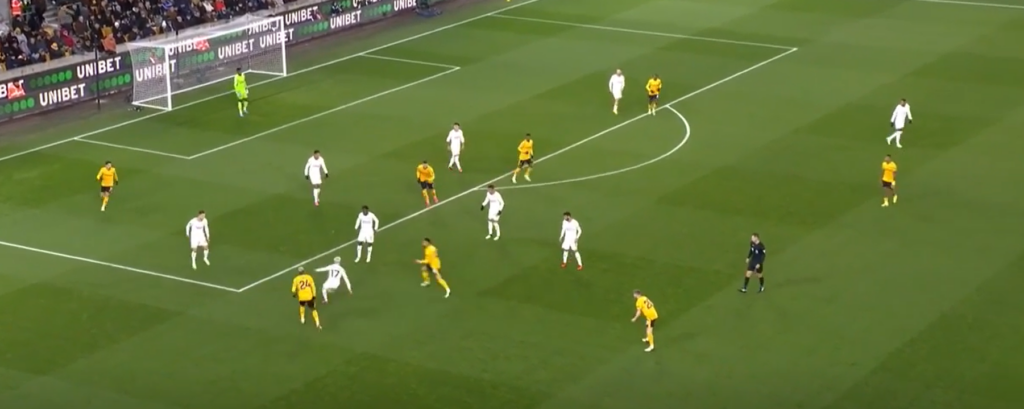
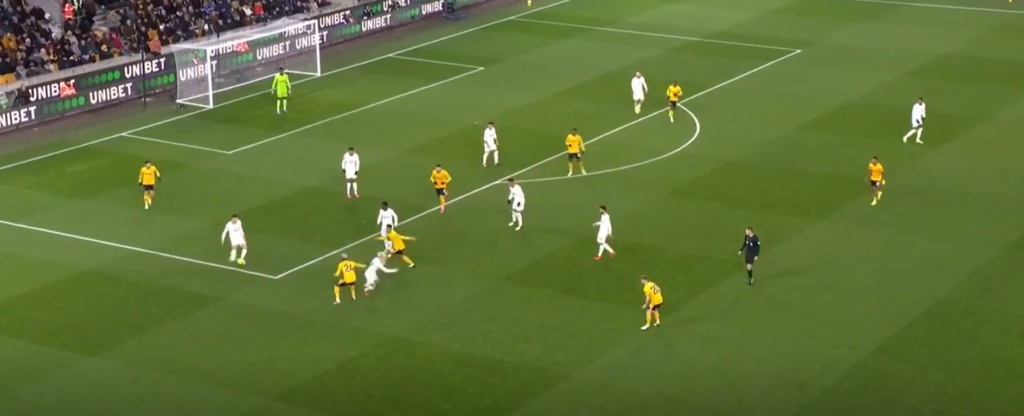
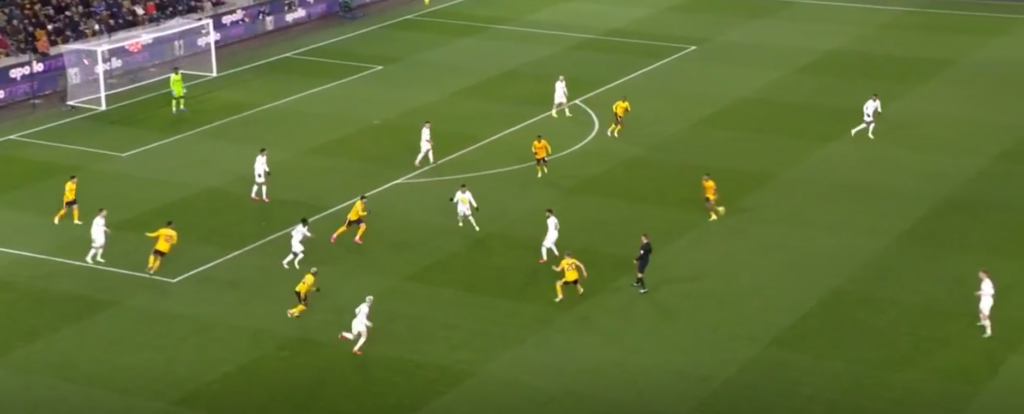
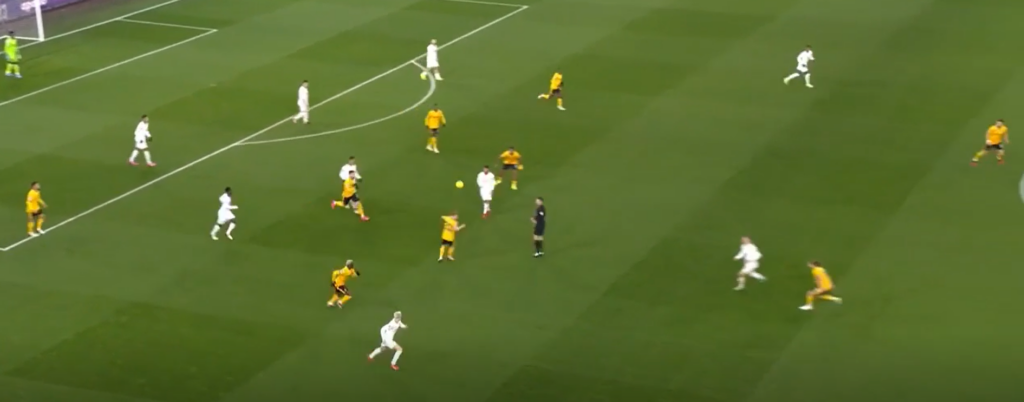
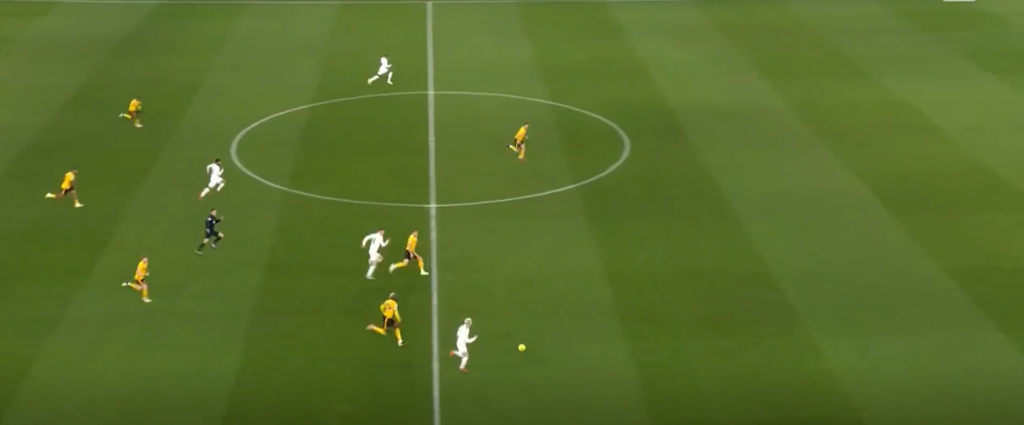
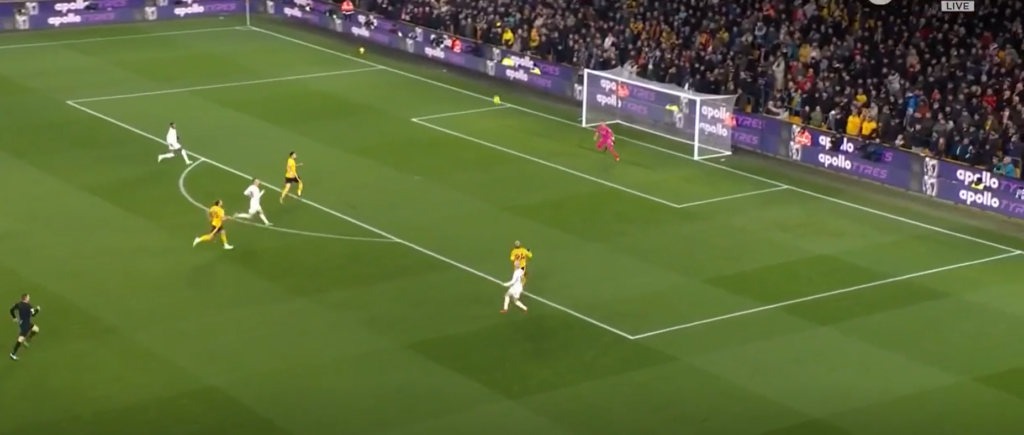
The work from United to play out of pressure here was reminiscent of a very common training ground drill. Dalot’s picture change to Casemiro, playing the ball inside, broke Wolves’ pressing flow and forced them to adjust, Casemiro brought the ball under control well with his chest and sent Garnacho off excellently. Had the youngster’s final action been better, United could have been 2-0 up sooner.
United’s performance vs Wolves was still imperfect, and the following game against West Ham also highlighted big flaws despite the 3-0 win, but the team’s possession against Wolves looked much more purposeful and made better use of the players in United’s XI.
The return of Casemiro is a key part of this; he is United’s only natural number six, and he allows youngster Kobbie Mainoo – already so influential in United’s team – to play in his preferred number eight role.